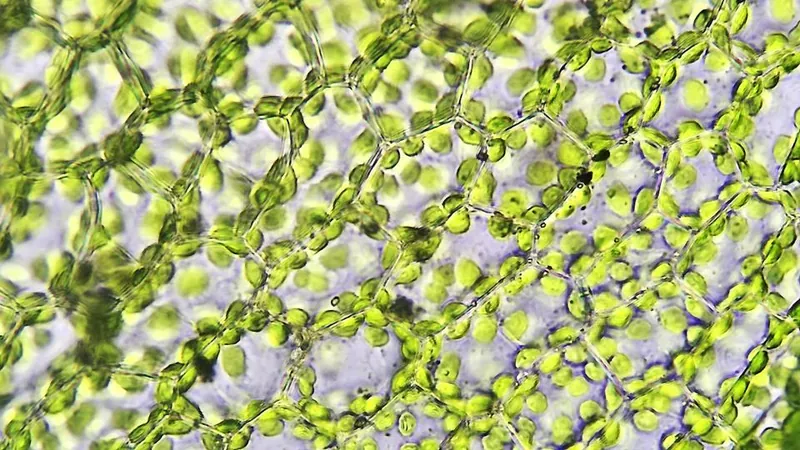
Breakthrough in Crop Resilience: Scientists Unravel Genetic Secrets to Create 'Super Crops'
2025-01-13
Author: Emma
Introduction
In an exciting advancement for agriculture and food security, scientists have discovered the genetic blueprint that could lead to the creation of more resilient crops capable of thriving in increasingly challenging climates. This groundbreaking research, conducted by a team at the Salk Institute in San Diego, California, in collaboration with the University of Cambridge, sheds light on a critical evolution in photosynthesis that could revolutionize how we grow our food.
Understanding Photosynthesis: C3 vs C4
To understand the significance of this finding, it’s essential to grasp the difference between C3 and C4 photosynthesis. While approximately 95% of plant species utilize C3 photosynthesis, a less efficient mechanism, C4 photosynthesis, which emerged around 30 million years ago, has shown remarkable advantages. C3 plants often misfire and utilize the wrong molecule about 20% of the time, leading to inefficient energy production. Additionally, C3 plants must keep their stomata (small openings on leaves) open longer to absorb carbon dioxide, resulting in significant water loss, making them more vulnerable to heat and drought.
Conversely, C4 plants, such as corn, have evolved to minimize water loss and have an optimized mechanism for converting sunlight into energy, making them exceptionally efficient and resilient. This characteristic is crucial as climate change intensifies, leading to hotter conditions and more unpredictable weather patterns.
The Insights from Research
Professor Joseph Ecker, a leading figure in the study, emphasized the urgency of this research in the context of a growing global population, stating, 'Understanding the genetic differences between C3 and C4 plants is not only fundamental for biological science but is also vital for developing robust agricultural solutions to combat climate change.'
The researchers have unveiled that the key to the evolutionary advantage of C4 plants lies not in their genetic makeup per se, but in the regulation of gene expression—how different genes are activated in various cell types. This regulation allows C4 crops to optimize their use of sunlight and water, granting them a competitive edge.
Future Prospects
Joseph Swift, a co-author of the study, expressed optimism about this discovery, stating, 'We now have a blueprint for how plants harness solar energy in diverse environments. Our goal is to activate C4 photosynthesis in C3 crops, paving the way for the development of high-yield, resilient crops that can withstand the stresses of a changing climate.'
Looking to the future, the potential applications of this research are vast, potentially leading to a new generation of agricultural strategies that prioritize sustainability and efficiency. The implications extend beyond just enhancing crop resilience; they could influence global food security and the ability to feed a burgeoning population without depleting vital natural resources.
Conclusion
Planting the seeds of innovation, this breakthrough in understanding photosynthesis could transform the agricultural landscape, ensuring that we can continue to produce food in a world facing unprecedented environmental challenges. Stay tuned for more developments in the quest for 'super crops'!



 Brasil (PT)
Brasil (PT)
 Canada (EN)
Canada (EN)
 Chile (ES)
Chile (ES)
 Česko (CS)
Česko (CS)
 대한민국 (KO)
대한민국 (KO)
 España (ES)
España (ES)
 France (FR)
France (FR)
 Hong Kong (EN)
Hong Kong (EN)
 Italia (IT)
Italia (IT)
 日本 (JA)
日本 (JA)
 Magyarország (HU)
Magyarország (HU)
 Norge (NO)
Norge (NO)
 Polska (PL)
Polska (PL)
 Schweiz (DE)
Schweiz (DE)
 Singapore (EN)
Singapore (EN)
 Sverige (SV)
Sverige (SV)
 Suomi (FI)
Suomi (FI)
 Türkiye (TR)
Türkiye (TR)
 الإمارات العربية المتحدة (AR)
الإمارات العربية المتحدة (AR)